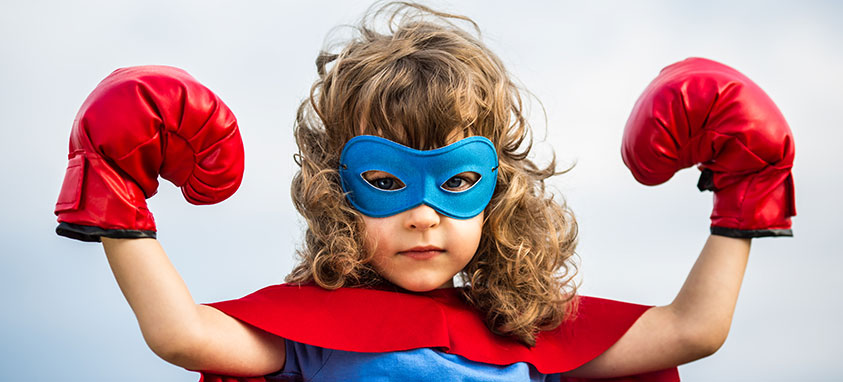Today marks International Day of the Girl. The United Nations sanctioned this date in 2012 as an initiative to empower girls who have been victimized by a variety of circumstances, ranging from violence to natural disasters.
UN Women—an organization dedicated to gender equality and the empowerment of women—issued a statement saying, “On the International Day of the Girl Child, let us commit to investing in skills training and education for girls and livelihood activities for young women around the world who are facing crises. Far from being passive recipients of assistance, these girls are leaders who will use the skills that they develop today to rebuild their communities, and create a better future for all of us.”
Let’s begin by situating ourselves—after all, our field is far from exempt. Planners certainly feel the brunt of gender inequality, especially in their professional work. Data USA shows that 77.4 percent of meeting, convention and event planners are female. However, annual compensation is more than $8,000, or 20 percent, higher for males on average.
It’s impossible to find an area where Day of the Girl isn’t relevant. According to the International Center for Research on Women, every 10 minutes, a teenage girl dies as a result of violence, and 130 million girls from age 6 to 17 are not in school. This is a problem for everyone—gender, age and culture alike.
The Day of the Girl website is a fantastic place to get educated and involved. It provides a variety of resources for specific organizations on the wide range of issues women face, ways of supporting the cause, blogs and relevant campaigns.
It also lists the Day of the Girl’s core principles:
- Girls are the experts on issues that affect girls.
- Girls from marginalized communities must be central in conversations about social justice issues involving those communities.
- Truly effective social change cannot come without girls’ leadership.
- Girls’ issues are intersectional. We must intentionally include people who are different from ourselves in our social change work.
Clearly, it’s time to fight for a world that is more welcoming, accommodating and simply fair to girls. Here are a few ways you can begin encouraging change.
Familiarize with Issues and Organizations
Education is always an essential first step. Start researching organizations that aid unique challenges faced by girls globally. Some of these issues include ending child marriage, providing girls’ education, supplying health care and fighting poverty. Next, read up on these issues or speak to members of these organizations. Find out the best strategies for donating, raising awareness and volunteering. You might be surprised by how many ways there are to do this.
Incorporate the Cause
Initiating a fundraiser at your meeting or event is a fantastic opportunity to support girls, and one that is unique to planners. Not only will this encourage donations, but you will also be spreading vital awareness and knowledge. A few major organizations relating to these issues include the Malala Fund, She’s The First, CARE International, Camfed and Girls Not Brides.
Show Your Support
Although it may often be a small gesture, it’s crucial to show your support whenever the chance rises. Whether it is attending a local event or simply supporting the girls in your life through conversations, these actions can accumulate into a movement. Don’t forget to get the men involved, as well—their support is equally important. From Turkey to the Dominican Republic, there are special events throughout the world today. Yet, there are still plenty of events throughout the year that you can find through a little research.
Be Part of the Conversation—Make a Statement
Get involved online and join the conversation!
Today the hashtags #DayOfTheGirl and #GirlTakeover are trending. It is also encouraged to take a selfie where you think women belong, and pair it with #GirlBelongHere. Go ahead and tag the women and girls who inspire you in these posts—they deserve the shout out. Ultimately, it’s all about participating in the community and signifying a stance.
Remember that today is simply a reminder of a year-round effort. Continuously express yourself on blogs and social media. Offline, open up dialogues—give these issues a voice. And, most importantly, keep asking yourself the essential question: How can we support girls?
Here are some moving ways organizations, companies and women are using social media to show their support:
❤️ this @Beyonce song for #DayoftheGirl!
What is freedom for girls to you? We’ll go 1st. #FreedomForGirls is living w/o fear of violence. pic.twitter.com/0bIDHtjI4K
— UNICEF (@UNICEF) October 11, 2017
Happy #DayOfTheGirl! #IDG2017 pic.twitter.com/dtwD13v10X
— Malala (@Malala) October 11, 2017
The doctors said I would never sit up on my own, never walk, never run, never speak…..I'm still working on the last one 😍 #DayoftheGirl pic.twitter.com/cRpGUFnMbD
— Melissa Grace (@Melissassmile) October 11, 2017
Science and Education? #GirlBelongHere! "How to Celebrate International Day of the Girl." – https://t.co/xpBhXrJ72s pic.twitter.com/tqchsErj8F
— UIC Pharmacy (@UICPharm) October 11, 2017
On #DayoftheGirl, we celebrate girls of all ages and walks of life and reaffirm the fact that they are our future and capable of ANYTHING. pic.twitter.com/zGxjqD6LaX
— Norm Kelly (@norm) October 11, 2017
Nevertheless she persisted. #DayOfTheGirl pic.twitter.com/lSJRewtmU8
— Analisa Swan 🆘 #DemForce (@Analisa_Swan) October 11, 2017




